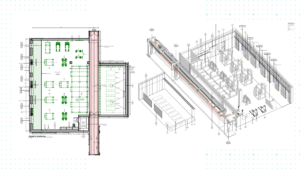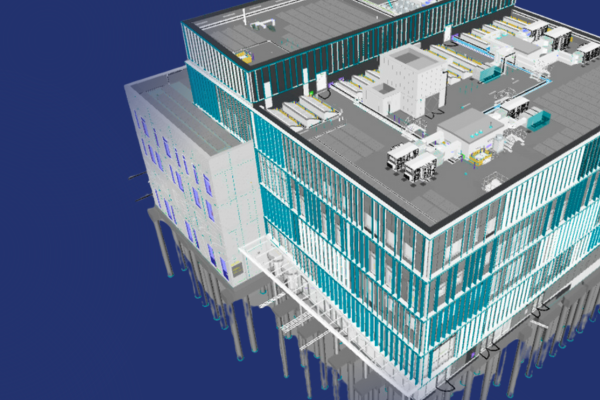Explore how Building Information Modelling (BIM) is paving the construction industry’s future with its comprehensive tools for sustainability, collaboration and efficiency in project development.
In this article, find out why BIM is not just an essential asset to project development but an invaluable resource that will undoubtedly form the future of construction.
What is BIM?
BIM is a digital process that involves creating and managing 3D models of buildings, infrastructure, and construction projects. These 3D models digitally represent the physical and functional characteristics of a project. BIM offers a platform for architects, engineers, contractors, designers and stakeholders to collaborate on a project in real-time. The software allows the comprehensive development of 3D models and has built-in data syncing and clash detection to further facilitate a collaborative workflow.
What are the advantages of using BIM?
BIM’s real-time collaboration and coordination are key to the advantages that come with using it. Integrating various disciplines’ data within the BIM model allows the software to simulate lighting conditions, acoustic properties, airflow, and even human movement within a space. This method of working is efficient and allows insights into potential issues with the project at a significantly earlier stage than other forms of planning, which promotes both time and cost efficiency.
BIM supports a project’s development from initial conception to potential future demolition or renovations and allows facilities management, asset tracking and planning predictive maintenance. It streamlines workflow, reduces rework, and promotes sustainability by facilitating energy performance analysis and encouraging the selection of sustainable materials.
BIM for DCU’s Polaris Building Project
McKeon Group and Walls are currently collaborating on an innovative project which showcases the exceptional capabilities of BIM in identifying and resolving design problems. The project, DCU’s Polaris Building, involves, among other things, planning a multi-purpose building with a gym on the top floor. Below are some images that provide a clear visual comparison between 2D and 3D BIM models, which should aid in understanding how the latter can help identify potential issues.

2D Plans of the Polaris Building’s gym

3D BIM Models of the Polaris Building, with a focused image of the gym
During the design phase, BIM implementation identified a critical issue that would have been challenging to detect using traditional 2D models: the ceiling height in the proposed gym area needed to be increased. The clash detection algorithms in the 3D BIM model have enabled the teams to address the concern early in the design phase, which has aided in preventing costly rework during construction.
Why is BIM the future?
DCU’s Polaris Building Project is an excellent example of how BIM can help construction professionals identify and resolve issues both early in and during the design process, saving time and money. BIM plays a critical role in the continuing development of the Polaris Building. This reiterates and firmly proves the need for all AEC professionals to make use of the software – it will undoubtedly be an essential skill in the near future.
About McKeon Group
At McKeon Group, we are committed to delivering top-notch services that exceed our clients’ expectations, with over 70 years of experience in the construction industry. If you have a construction project that requires expert attention, our construction team is here to help. Get in touch with us today to learn more about how we can assist you.
Useful Resources
NBS: What is BIM?
Novatr: Four ways BIM can aid sustainable building design
Explorist: What is BIM? A video guide


